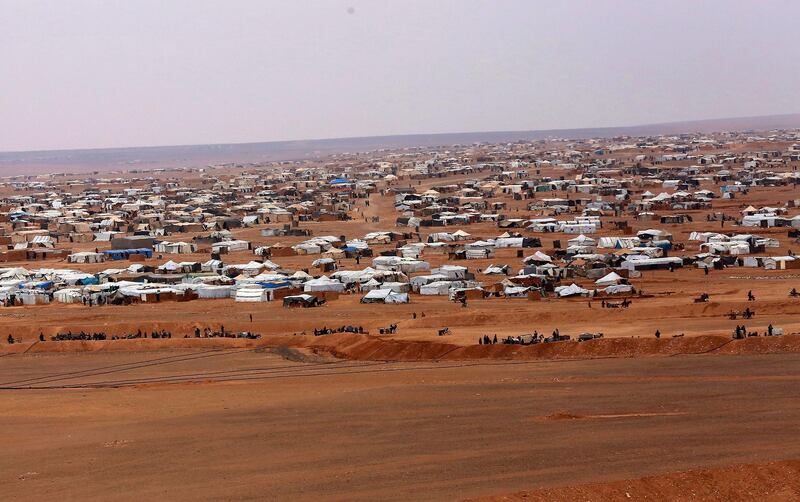Jordan says it is in talks with Washington and Moscow to empty a desert camp used by 50,000 displaced Syrians, a move aimed at defusing security tensions near a potential military flashpoint on its northeast border with Syria.
Jordan's foreign ministry said the kingdom backed a Russian plan to arrange the voluntary return of the inhabitants of Rukban camp to their home areas in eastern Syria following their recapture by the Syrian government from Islamic State.
"Jordanian-US-Russian talks have begun with the aim of finding a fundamental solution to Rukban by ensuring the right conditions of their voluntary return to their cities and towns," Foreign Ministry spokesman Majed al Qatarneh said.
"Jordan supports the Russian plan to create the conditions that allow the emptying of the camp," he said in a statement.
He did not elaborate.
Intelligence sources say the Russian plan entails negotiating with Syrian tribal leaders and former Western-backed rebels sheltering in the camp area to provide safe passage for returnees to go to opposition areas in northern Syria and to help those who want to go their homes in state-held areas.
Many camp inhabitants are not ready to go back to homes in state-held areas for fear of being drafted for conscription, tribal figures in the camp say.
Developments at Rukban are watched closely around the region because it is near a US garrison in southeastern Syria at Tanf on the Iraq-Syria border. The camp falls within a so-called de-confliction zone set up by the US Pentagon to try to shield the Tanf garrison from attacks by pro-government forces.
Damascus says the US forces are occupying Syrian territory and providing a safe-haven in that area for rebels it deems terrorists.
Jordanian officials have repeatedly said they suspect the camp is infiltrated with ISIS sleeper cells, a security nightmare that has haunted Amman since an ISIS militant in 2016 drove a car bomb into a Jordanian military border post, killing seven guards.
In the last three years, tens of thousands of Syrians trekked to the camp where the borders of Syria, Jordan and Iraq meet. They fled expanded Russian and US-led coalition air strikes against ISIS-held areas in central and eastern Syria.
_______________
Read more:
ISIS releases six of 27 Druze hostages in Syria
ISIS holdouts under siege in Syria by regime and US-backed forces
ISIS kills hostage from Syria's Sweida, local media says
Syrians lash out at government after ISIS slaughter in Sweida
_______________
Intelligence sources say a siege of the camp last month by the Syrian army that depleted food stores in the compound and raised the spectre of starvation was aimed at piling pressure on Washington.
Russia's defence ministry in August repeated an accusation that Washington has been harbouring ISIS militants within the zone.
Washington however responded to growing Russian pressure by conducting rare military exercises in the base last month, and General Joseph Votel, head of US Central Command, made an unannounced visit to Tanf.
Tanf lies on the strategic Damascus-Baghdad highway, once a major supply route for Iranian weapons into Syria. This makes the base a bulwark against Iran and part of a larger campaign against Iranian influence in the Middle East





